"I don't know how to sew," a little boy whispered to me as he stared at the colorful cloth in my hands. In front of him lay sewing instruments and fabrics spread across a long table. I was at the Boone Children's Gallery, sewing different patches together to create a traditional Korean wrapping cloth, known as a bojagi, when he came up to me.
"Well, I’m glad you came because I also didn’t know how to sew, but I learned right here!"
"Really?" the little boy asked.
"Really!" I answered back.
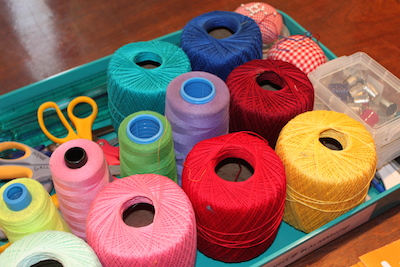 Richard Manirath Photography 2014
Richard Manirath Photography 2014
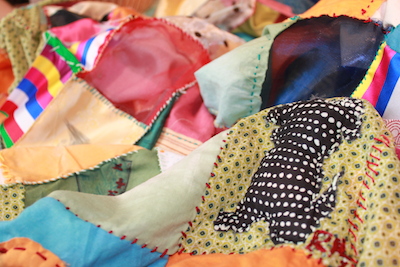 Richard Manirath Photography 2014
Richard Manirath Photography 2014
When the LACMA Education team brought up the idea of creating the world's largest bojagi, I was given the perfect opportunity to learn how to sew after years of wanting to learn. Sewing has been a part of my family for a long time, but I personally never learned the art of sewing. When my mother was young, there were no department stores in the small town of Nong Khai, Thailand; rather, families would provide services from their own homes. I remember my mother sewing garments all day and into the night. What once was a hobby had become her way of life, however, she never lost her love for piecing things together. Our family eventually immigrated to America, and sewing was no longer essential to our family’s stability. Whether it was because sewing was considered a predominantly female profession or because it was more practical to buy our own clothes, I never took the opportunity to learn.
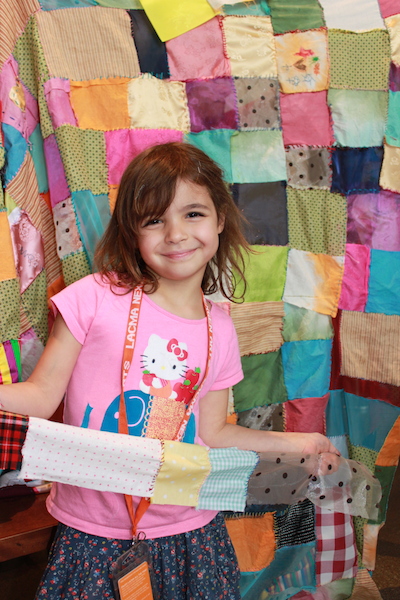 Richard Manirath Photography 2014
Richard Manirath Photography 2014
My second chance at learning how to sew came when the Education Department at LACMA invited teaching artist Youngmin Lee to share various techniques with us, including the running and whipstitch. It was the first time I threaded a needle, and I had difficulty with tying a knot. As the workshop progressed, I realized that sewing was challenging, and I gained more respect for the craft and for my mother, who supported our family through this art. There were times when I was frustrated because I would drop the needle and lose the thread. And there were times when I would create a complex web of knots. Many of my peers were able to pick up the intricate techniques and sew as smoothly as Youngmin. I, on the hand, was like a fish out of water. Although I tried to play off my clumsiness by laughing about it, it was hard not to feel self-conscious.
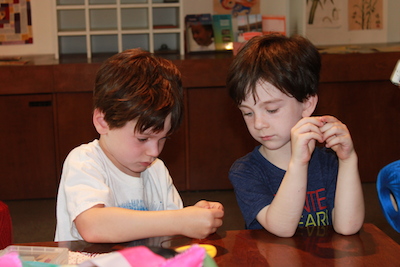 Richard Manirath Photography 2014
Richard Manirath Photography 2014
I was embarrassed that I was slow and had to ask for repeated demonstrations. Being a perfectionist, it was hard for me to embrace these mistakes. I realized that sewing is an art that requires patience and an attention to detail, and that pressuring myself would only impede my learning process. The experience motivated me to practice until I became more confident. I was determined to get better, and I wanted to prove to myself that I was capable of doing so.
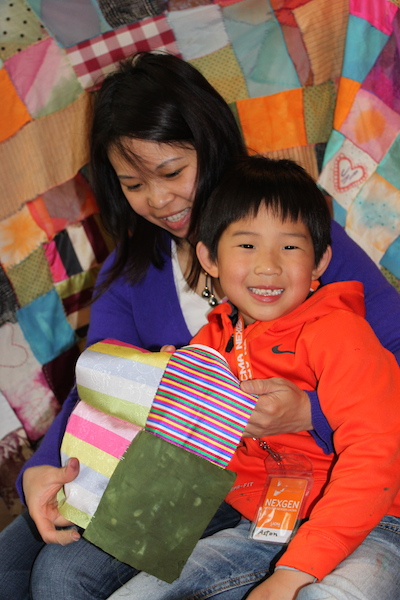 Richard Manirath Photography 2014
Richard Manirath Photography 2014
After months of preparation and research, as well as some sewing sessions with my mom, I was able to hone the skills that were once foreign to me. I shared part of my story with the little boy who sat down next to me, because I could relate to his eagerness to learn and the fear of making mistakes. I assured him that he could do it with time and to practice just as I had. There were times when he wanted to give up, but I continued to encourage him, reminding him that we all learn at our own pace. We took our time, and, at the end of the day, I was proud that he weaved together different textiles using the various techniques that I taught him. This collaborative project allowed me to connect with my mother, the boy, and hundreds of visitors that came in the following days. The fact that I am able to teach the same techniques that my mother used and share my experiences with patrons as young as four and as old as 80 has made this project truly special for me. Not only are we tied together by our natural curiosity and our instinct to connect with others, but also by this bojagi. So for those out there who say, "I don't know how to sew," it is never too late to continue learning.
Richard Manirath, Boone Children's Gallery Facilitator



